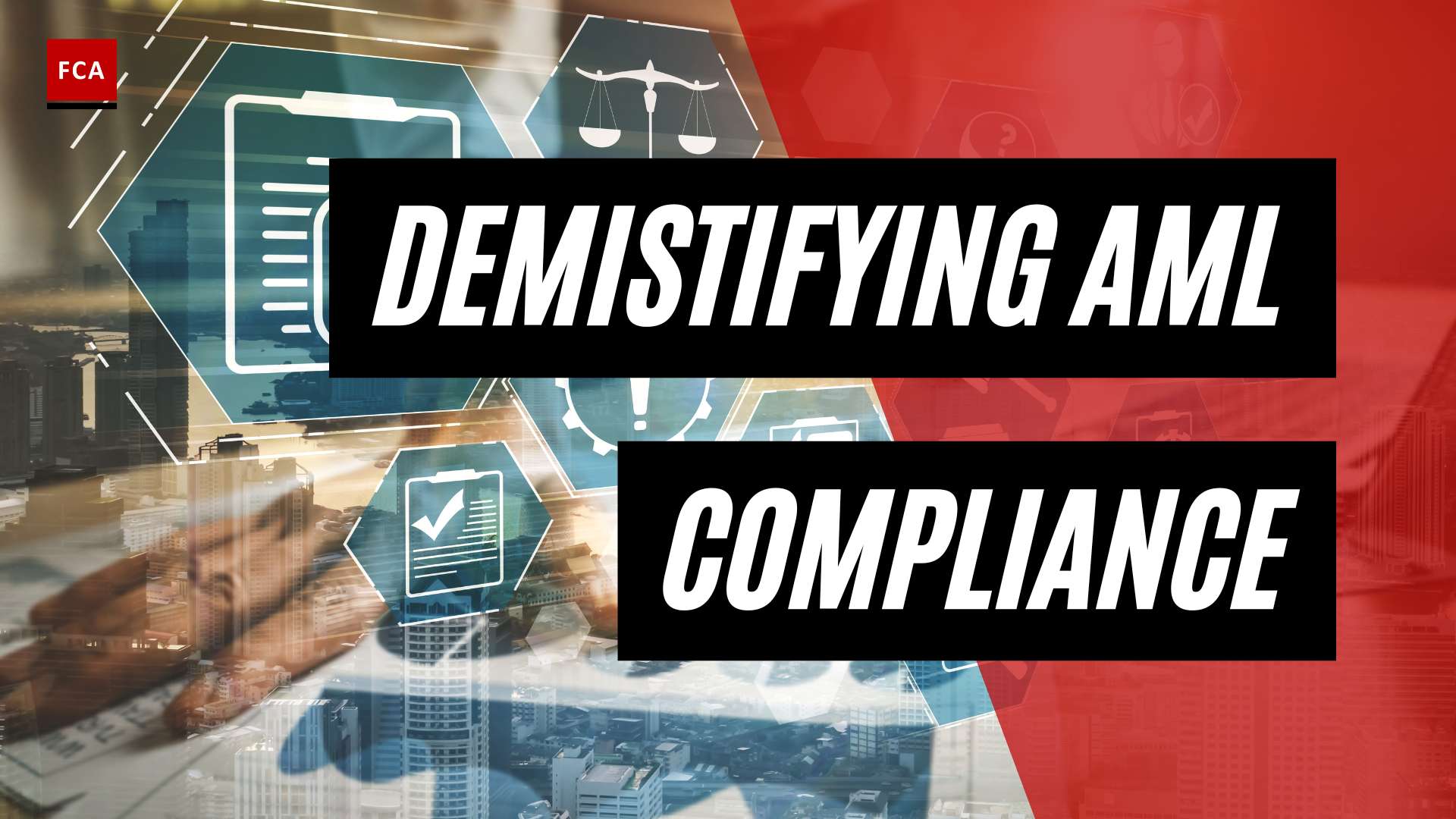Understanding Money Laundering
Money laundering is a criminal activity that involves disguising the origin of financial proceeds generated through illicit activities. The process of money laundering aims to make the illicit funds appear legitimate, thus allowing criminals to use them without detection of the illegal activity that produced them. This deception enables the perpetrators to expand their criminal enterprises, including drug dealing, terrorism financing, arms smuggling, and more.
Definition and Overview
Money laundering refers to the process of transforming the monetary proceeds derived from criminal activity into funds with an apparent legal source. By doing so, criminals can integrate these ill-gotten gains into the legitimate financial system without raising suspicion. The complexity of the global financial system, as well as differences in national laws, provide opportunities for money launderers to exploit vulnerabilities and facilitate their illegal activities (FinCEN).
The fight against money laundering is of utmost importance, as it has far-reaching social and economic consequences. Governments and regulatory bodies worldwide have established stringent money laundering laws and regulations to combat this illicit practice. Financial institutions, such as banks, play a vital role in preventing money laundering by implementing robust anti-money laundering (AML) measures and reporting suspicious activities to the relevant authorities.
Criminal Origins of Money
Understanding the criminal origin of money is crucial for successful money laundering prosecutions. Law enforcement agencies employ thorough investigation and analysis techniques to establish the link between financial proceeds and the criminal activities that generated them. By proving the illicit origin of the property involved in money laundering, authorities can build strong cases against money launderers (Department of Justice).
The process of tracking and tracing the origins of illicit funds requires collaboration between law enforcement agencies, financial institutions, and regulatory bodies. Through their combined efforts, they can uncover the intricate network of criminal activities and disrupt the flow of illicit funds. This not only aids in prosecuting money launderers but also helps dismantle criminal organizations and prevent further illicit activities.
The fight against money laundering and its associated crimes is a global endeavor. International organizations, such as the Financial Action Task Force (FATF) and the International Monetary Fund (IMF), play a central role in promoting international cooperation, setting standards, and providing guidance to countries in their efforts to combat money laundering. Strengthening anti-money laundering measures and enhancing international collaboration are essential components of a comprehensive strategy to tackle this illicit activity (IMF).
Money Laundering Schemes in the Banking Sector
Money laundering encompasses various schemes and techniques used to conceal the origins of illicit funds. In the banking sector, several specific methods are employed to facilitate money laundering. These include trade-based money laundering, counter-valuation, and structuring.
Trade-Based Money Laundering
Trade-based money laundering involves manipulating international trade transactions to disguise the illicit origin of funds. Criminals may overstate or understate the value of goods, use false invoices, or engage in other fraudulent activities to move money across borders while appearing to conduct legitimate trade. By exploiting the complexities of global trade, criminals can obscure the true nature of their funds and integrate them into the legitimate financial system.
Counter-Valuation
Counter-valuation is a money laundering technique where individuals undervalue or overvalue assets to manipulate their worth in financial transactions. By intentionally misrepresenting the value of assets, such as real estate, vehicles, or artwork, criminals can move money without arousing suspicion. This scheme allows them to legitimize their illicit funds or inflate the value of assets to obtain illicit gains.
Structuring
Structuring, also known as smurfing, involves making multiple small transactions to avoid attracting attention. Instead of conducting large transactions that may trigger scrutiny, criminals make numerous small deposits or withdrawals to fly under the regulatory radar. Once these smaller transactions are combined, they can create a substantial sum of seemingly legitimate funds. Structuring helps to obfuscate the source of the funds and evade detection.
These money laundering schemes demonstrate the adaptability and creativity employed by criminals in the banking sector. To combat money laundering effectively, financial institutions must implement robust anti-money laundering (AML) measures, such as comprehensive customer due diligence, transaction monitoring, and reporting suspicious activities. By staying vigilant and adhering to strict regulatory guidelines, banks can play a crucial role in preventing money laundering and safeguarding the integrity of the financial system.
For more information on money laundering techniques, penalties, and preventive measures, explore our articles on money laundering techniques, money laundering penalties, and money laundering reporting.
Examples of Money Laundering
Money laundering takes various forms and techniques to disguise the illicit origins of funds. Here are some notable examples of money laundering schemes:
Car Wash Scheme
In a car wash scheme, a person purchases a car wash business and falsely inflates the reported revenue. For instance, they may claim that the car wash generated $10,000 in a given period when it actually made only $2,000. The difference of $8,000 is considered laundered money. This method allows illicit funds to be integrated with legitimate income, making it difficult to trace the source of the funds (Investopedia).
Panama Pump Scheme
The “Panama Pump” scheme is a complex money laundering technique that involves multiple wire transfers between various international accounts. These transfers are designed to create a complex web of transactions, making it challenging to follow the money trail. By moving funds through multiple accounts, money launderers aim to obfuscate the origin and ownership of the funds (Investopedia).
Asset Flipping
Asset flipping is a method where individuals purchase high-value assets, such as real estate or luxury items, using illicit funds. They then sell these assets at a higher price to obtain clean money. This technique allows money launderers to transform illegal proceeds into seemingly legitimate funds, making it difficult to trace the original source of the money (Investopedia).
Use of Casinos
Casinos are sometimes exploited for money laundering due to the high volume of cash transactions they handle. Money launderers can “blend in” their illicit funds with legitimate winnings or losses at the casino. The large amount of cash flowing in and out of the casino environment makes it challenging to distinguish between legal and illegal funds, providing an opportunity for money laundering activities (Investopedia).
Structing
In the technique known as “structing,” individuals make multiple small transactions to avoid arousing suspicion. These transactions are kept below reporting thresholds to evade detection. Once these small transactions are combined, they create a significant sum of clean money. The purpose of structuring is to break down large amounts of illicit funds into smaller, less noticeable transactions, making it difficult for authorities to identify and investigate suspicious activities.
These examples highlight the diverse methods employed by money launderers to conceal the origins of illicit funds. It is crucial for authorities, financial institutions, and individuals to remain vigilant and report any suspicious activities to combat money laundering effectively. Understanding these schemes is vital in implementing robust anti-money laundering measures to safeguard the integrity of the financial system and prevent criminal activities.
Consequences of Money Laundering
Money laundering, with its far-reaching implications, has significant consequences that extend beyond the immediate financial realm. Understanding these consequences is essential for combating and preventing money laundering effectively. This section will explore the social impact of money laundering, threats to financial systems, and the importance of international collaboration in Anti-Money Laundering (AML) and Counter Financing of Terrorism (CFT) efforts.
Social Impact
Money laundering has wide-ranging social consequences that affect communities, institutions, and economies. Illicit funds generated through money laundering often originate from criminal activities such as drug trafficking, corruption, and organized crime. By enabling criminals to disguise the proceeds of their illegal activities, money laundering perpetuates criminal enterprises and undermines the rule of law.
The social impact of money laundering includes:
-
Undermining economic development: Money laundering hampers economic growth by distorting markets, deterring investments, and eroding public trust. Illicit funds flowing through the financial system can destabilize economies and hinder legitimate businesses’ ability to compete.
-
Funding criminal activities: Money laundering provides criminals with the means to finance further criminal activities, including drug trafficking, human trafficking, terrorism, and cybercrime. These activities pose significant risks to society, ranging from public safety concerns to threats to national security.
-
Exacerbating inequality: Money laundering perpetuates income inequality by facilitating the accumulation of wealth through illicit means. This wealth disparity can undermine social cohesion, exacerbate social divisions, and contribute to a sense of injustice within communities.
-
Impeding social progress: The diversion of funds through money laundering deprives governments of resources that could be allocated to essential public services, such as education, healthcare, and infrastructure. This diversion can hinder societal progress and impede efforts to alleviate poverty and improve living conditions.
Threats to Financial Systems
Money laundering poses significant threats to the integrity and stability of financial systems worldwide. The infiltration of illicit funds into the legitimate financial sector can have far-reaching consequences, including:
-
Weakening financial institutions: Money laundering activities can compromise the reputation and integrity of financial institutions. Institutions that inadvertently facilitate money laundering face reputational damage, loss of public trust, and potential legal and regulatory penalties.
-
Increased compliance and operational costs: Financial institutions must invest significant resources in establishing and maintaining robust Anti-Money Laundering (AML) and Know Your Customer (KYC) programs. These compliance efforts include enhanced due diligence, transaction monitoring, and reporting suspicious activities. The costs associated with these measures can be substantial and ultimately passed on to consumers.
-
Systemic risks: Money laundering can introduce systemic risks into the financial system, including increased vulnerability to financial crimes, economic instability, and erosion of investor confidence. These risks can undermine the effectiveness and efficiency of financial markets, impeding economic growth and development.
-
Exploitation of financial vulnerabilities: Money laundering schemes exploit vulnerabilities in financial systems, such as inadequate regulatory frameworks, weak enforcement mechanisms, and cross-border jurisdictional disparities. Criminal organizations and terrorist groups capitalize on these weaknesses to move funds anonymously and evade detection.
International Collaboration in AML/CFT Efforts
Given the global nature of money laundering, international collaboration is crucial for combating and preventing this illicit activity effectively. Enhanced collaboration among countries, financial institutions, and international organizations is vital in detecting, deterring, and disrupting money laundering activities. Key aspects of international collaboration in AML/CFT efforts include:
-
Establishing global standards: Organizations like the Financial Action Task Force (FATF) play a pivotal role in developing and promoting global AML/CFT standards. These standards serve as a benchmark for countries to develop robust AML/CFT frameworks and ensure consistent implementation across jurisdictions.
-
Promoting regulatory cooperation: International collaboration facilitates regulatory cooperation and information sharing among countries. By aligning AML/CFT frameworks and sharing best practices, countries can close regulatory gaps, strengthen enforcement mechanisms, and enhance the effectiveness of preventive measures.
-
Sharing resources and expertise: Collaborative efforts enable countries to share resources, expertise, and technology platforms. Developed economies can provide support to developing countries through training programs, workshops, and capacity-building initiatives. Resource sharing in terms of financial intelligence units, analytical tools, and technology platforms enhances the efficiency and effectiveness of investigations.
-
Enhancing intelligence sharing: Sharing information and intelligence across borders is essential for identifying high-risk individuals, entities, and jurisdictions involved in money laundering. This coordinated approach allows for targeted investigations and disrupts illicit financial networks more effectively.
International collaboration in AML/CFT efforts strengthens the integrity and resilience of the global financial system. By fostering cooperation, aligning standards, and sharing resources, countries can enhance their ability to detect and prevent money laundering, ultimately protecting their economies and societies from the detrimental effects of illicit financial activities.
Notable Money Laundering Cases
Money laundering has been a pervasive issue in the banking sector, with several high-profile cases shedding light on the extent of illicit activities. Here are some notable examples of money laundering cases that have made headlines:
Wachovia Bank
Wachovia Bank, which was acquired by Wells Fargo in 2008, found itself embroiled in a massive money laundering scandal. Between 2004 and 2007, drug cartels in Mexico laundered approximately USD 390 billion through Wachovia Bank branches. The bank failed to adequately control the source of these funds, allowing the cartels to utilize various methods, including mass cash services, to move the laundered money (Sanction Scanner).
Standard Chartered Bank
In 2012, Standard Chartered Bank faced penalties of $670 million for violating sanctions against Iran. The bank was accused of failures in anti-money laundering controls, which facilitated the clearing of U.S. regulations for approximately $265 billion related to the Iranian government. Furthermore, in 2019, the Federal Reserve and the Financial Conduct Authority fined the bank a total of $1.1 billion for serious deficiencies in their AML controls (Sanction Scanner).
Danske Bank
Danske Bank’s Estonian branch became involved in a significant money laundering scandal. Between 2007 and 2015, the bank acted as a conduit for thousands of suspicious customers, enabling illicit transactions totaling approximately $228 billion. Weak controls and an ineffective AML compliance program allowed these money laundering activities to flourish. As a result, Danish authorities imposed fines of $2 million on Danske Bank for its role in the scandal (Sanction Scanner).
Nauru as a Tax Haven
Nauru, a small island nation, gained notoriety in the 1990s for transforming into a tax haven. During this period, it helped launder an estimated $70 billion for Russian criminals through shell banks. In response, the U.S. Treasury designated Nauru as a money-laundering state in 2002, imposing severe sanctions similar to those imposed on Iraq. In 2005, with the assistance of the Financial Action Task Force (FATF), Nauru implemented anti-money laundering (AML) and tax haven laws to combat illicit financial activities (Sanction Scanner).
Bank of Credit and Commerce International (BCCI)
The Bank of Credit and Commerce International (BCCI), established in 1972, was at the center of one of the largest money laundering scandals in history. BCCI was involved in fraudulent activities and money laundering schemes that totaled up to $23 billion. The bank employed sophisticated methods such as shell companies, privacy havens, commissions, and bribery to circumvent regulatory oversight. The closure of BCCI in 1991 was orchestrated by the Bank of England, leading to legal actions and subsequent lawsuits against the Bank of England itself (Sanction Scanner).
These notable cases highlight the significant impact of money laundering within the banking sector. They serve as a reminder of the importance of robust AML measures and the need for financial institutions to actively combat illicit financial activities.
The Role of International Organizations in Combating Money Laundering
International collaboration and cooperation are vital in the fight against money laundering. Several international organizations play a crucial role in developing global standards, promoting regulatory cooperation, and strengthening anti-money laundering (AML) and combating the financing of terrorism (CFT) efforts. Let’s explore the role of two prominent organizations in this field: the Financial Action Task Force (FATF) and the International Monetary Fund (IMF).
Financial Action Task Force (FATF)
The Financial Action Task Force on Money Laundering (FATF) is an intergovernmental body that sets international standards and promotes effective implementation of legal, regulatory, and operational measures to combat money laundering, terrorist financing, and other related threats. Collaborating with organizations such as the IMF, the World Bank, the United Nations, and FATF-style regional bodies, the FATF issues recommendations covering various aspects of AML/CFT to assist national governments in setting up effective regimes (IMF).
The FATF’s recommendations provide a comprehensive framework for countries to combat money laundering and terrorist financing. These recommendations cover areas such as customer due diligence, suspicious transaction reporting, international cooperation, and the freezing and confiscation of criminal proceeds. The FATF conducts mutual evaluations and peer reviews to assess countries’ compliance with its standards and assists them in addressing any deficiencies in their AML/CFT regimes.
International Monetary Fund (IMF)
The International Monetary Fund (IMF) plays a significant role in combatting money laundering and the financing of terrorism. The IMF’s involvement in these efforts began in 2000 and expanded to include combating the financing of terrorism after the terrorist attacks on September 11, 2001. The IMF incorporates AML/CFT assessments and capacity development as a regular part of its work (IMF).
The IMF evaluates countries’ compliance with international AML/CFT standards through its bilateral surveillance program. It assists countries in developing programs to address any shortcomings identified during these assessments. By working closely with member countries, the IMF helps them strengthen their legal and regulatory frameworks, enhance their supervisory and enforcement capabilities, and improve their capacity to combat money laundering and terrorist financing effectively.
Collaboration and Standards
International collaboration in AML/CFT efforts is essential due to the global nature of money laundering and terrorism financing. Criminal networks and terrorist organizations operate across borders, exploiting jurisdictional disparities and weak enforcement mechanisms. By establishing channels for information sharing and intelligence exchange, countries can identify high-risk individuals, entities, and jurisdictions. This enables targeted investigations and more effective disruption of illicit financial networks.
Furthermore, aligning AML/CFT frameworks internationally helps close regulatory gaps and ensures consistent implementation of preventive measures, such as customer due diligence and suspicious transaction reporting. This coordinated approach reduces opportunities for criminals and terrorists to exploit jurisdictional disparities, ultimately strengthening the integrity and resilience of the global financial system.
The role of international organizations like the FATF and the IMF is crucial in promoting collaboration, setting global standards, and providing technical assistance to countries in their AML/CFT efforts. By working together, countries can enhance their capabilities to combat money laundering and terrorist financing, making it more challenging for criminals and terrorists to exploit gaps in the system and avoid detection.
Strengthening AML/CFT Measures
To effectively combat money laundering, it is crucial to strengthen Anti-Money Laundering and Countering the Financing of Terrorism (AML/CFT) measures. Financial institutions play a pivotal role in this effort by implementing robust reporting mechanisms, supporting law enforcement efforts, and maintaining effective AML compliance programs.
Importance of Reporting by Financial Institutions
Financial institutions play a critical role in detecting and reporting suspicious financial activities that may indicate potential money laundering. The data collected by financial institutions, when combined with information from other sources, helps law enforcement agencies connect the dots and uncover illicit financial transactions. Timely and accurate reporting is key to ensuring the success of AML/CFT efforts.
The Bank Secrecy Act (BSA) has been instrumental in facilitating the reporting of suspicious transactions by financial institutions. Under the BSA, institutions are required to collect and submit relevant data to the Financial Crimes Enforcement Network (FinCEN). This information provides valuable insights into personal information, banking patterns, business associations, and more, aiding law enforcement investigations (FinCEN).
Law Enforcement Awards and Recognition
Acknowledging the vital role of financial institutions in combating money laundering, FinCEN annually hosts the Law Enforcement Awards ceremony. This program recognizes law enforcement agencies that have effectively utilized financial institution reporting to achieve successful prosecutions. The awards highlight the significant contribution of the financial industry in supporting law enforcement efforts to combat financial crimes. By honoring successful collaborations between financial institutions and law enforcement, the program underscores the importance of timely and accurate reporting in achieving positive outcomes (FinCEN).
Effective AML Compliance Programs
Financial institutions must establish and maintain effective AML compliance programs to mitigate the risks associated with money laundering. These programs involve implementing robust internal controls, conducting regular risk assessments, and providing ongoing training to employees.
An effective AML compliance program includes procedures for customer due diligence, monitoring transactions for suspicious activity, and reporting any identified suspicious transactions. By establishing strong internal controls and conducting thorough risk assessments, financial institutions can identify potential vulnerabilities and develop appropriate mitigation strategies. Regular training ensures that employees are aware of the latest money laundering techniques, red flags, and regulatory requirements.
Financial institutions should also stay updated on evolving AML/CFT regulations and industry best practices. By continually improving their compliance programs, institutions can enhance their ability to detect and prevent money laundering activities, contributing to the overall integrity of the financial system.
In conclusion, strengthening AML/CFT measures requires the active participation of financial institutions. By prioritizing timely and accurate reporting, supporting law enforcement efforts, and maintaining effective AML compliance programs, financial institutions can play a crucial role in combating money laundering and protecting the integrity of the global financial system.
Notable Money Laundering Cases
Money laundering is a global issue that affects financial systems and societies worldwide. Several notable money laundering cases have shed light on the extent and impact of these illicit activities. Understanding these cases helps us grasp the severity of money laundering and highlights the need for stronger anti-money laundering measures.
Wachovia Bank
One significant money laundering case involved Wachovia Bank, one of the largest financial institutions in the United States. In 2010, the bank agreed to pay a settlement of $160 million for failing to maintain an effective anti-money laundering program. The case revealed that Wachovia had allowed billions of dollars linked to Mexican drug cartels to be laundered through its accounts. This case highlighted the importance of robust compliance programs and due diligence in preventing money laundering within financial institutions.
Standard Chartered Bank
Standard Chartered Bank, a global banking and financial services company, faced scrutiny for its involvement in money laundering activities. In 2012, the bank reached a settlement of $340 million with U.S. regulators for violating anti-money laundering laws. The case revealed that the bank had facilitated transactions with Iran, in violation of U.S. sanctions. It emphasized the need for financial institutions to be vigilant in detecting and reporting suspicious transactions to prevent money laundering and the financing of illicit activities.
Danske Bank
Danske Bank, one of Denmark’s largest financial institutions, faced a major money laundering scandal in recent years. It was discovered that billions of euros had flowed through its Estonian branch, with a significant portion suspected to be linked to money laundering. The case highlighted the importance of robust compliance mechanisms and effective oversight to prevent money laundering within large multinational banks.
Nauru as a Tax Haven
The tiny Pacific island nation of Nauru gained global attention as a tax haven and money laundering hub. In the late 1990s and early 2000s, Nauru’s lax financial regulations allowed illicit funds from various criminal activities, including tax evasion and corruption, to flow through its offshore banking system. The case highlighted the vulnerabilities of small jurisdictions and the need for international cooperation to combat money laundering effectively.
Bank of Credit and Commerce International (BCCI)
The Bank of Credit and Commerce International (BCCI) was a global bank that collapsed in 1991 due to extensive money laundering and financial fraud. The bank operated across multiple jurisdictions, facilitating money laundering for various criminal enterprises, including drug cartels and terrorist organizations. The BCCI case led to significant reforms in the global financial system and underscored the importance of robust regulatory frameworks and international collaboration in combating money laundering.
These notable money laundering cases serve as reminders of the sophisticated techniques used by criminals to exploit weaknesses within financial systems. They highlight the importance of continuous efforts to strengthen anti-money laundering measures, enhance compliance programs, and promote international collaboration in combating money laundering and the financing of illicit activities.
To effectively combat money laundering, international organizations such as the Financial Action Task Force (FATF) and the International Monetary Fund (IMF) play crucial roles in setting global standards, promoting regulatory cooperation, and providing technical assistance to countries. By aligning AML/CFT frameworks and enhancing international collaboration, countries can work together to close regulatory gaps, share resources, and disrupt illicit financial networks, making it more challenging for criminals to exploit the global financial system.
By staying vigilant, enforcing strong regulations, and fostering international cooperation, countries can work towards a more secure and transparent financial system, mitigating the risks posed by money laundering and protecting societies from the consequences of illicit financial activities.








